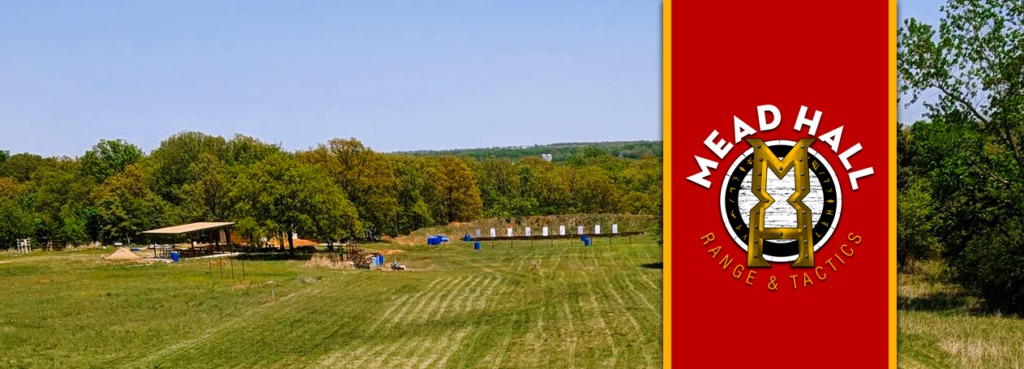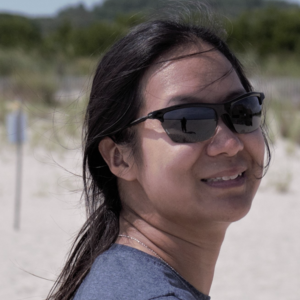
Self-defense skills can be challenging to learn. They can be emotionally complex to process and physically difficult to master. We’ve talked here before about ensuring that the people you’re surrounding yourself with in training will help your efforts, and making the effort to use equipment that you don’t have to struggle against. There’s another piece that is just as important, and I was reminded about it when chatting with the owner of Meadhall Range recently, ahead of my visit there later this week. One of the things Bill and I have talked about for years is the enormous investment into facility amenities he’s made, similar to much of the work that went into my own prior range project. It’s not a matter of trying to create some kind of fancy country club, though those are certainly enjoyable. It’s because having a physical environment that doesn’t distract the student is important to create an optimum learning experience.
My self-defense training journey began on shooting ranges. Many are located in geographically isolated areas and even those closer to civilization are often on large pieces of property that have perhaps only one or two permanent structures with walls and roofs, let alone running water and modern plumbing. Those buildings might or might not be a reasonable walking distance to the specific location of a class. Porta potties, outhouses, and even just “go behind the trees over there” were common. Shade and seating were usually bring-your-own affairs, and could require hiking them in because a particular range might not be vehicle-accessible. Poor weather conditions were addressed by asking students to dress appropriately. You were also expected to bring all of the food and hydration you might need for the day, because it might be a 45-minute round trip or more to get to a store.
It’s absolutely possible to learn a lot under those conditions; I did. I even had fun, and in addition to learning the skills I went to class for, learned how to be better prepared to be self-sufficient for short periods of time away from the modern amenities I prefer. As someone who jokes that two-star hotels are “roughing it,” staying in cabins, packing up enough food, water, and gear to be ready for all eventualities, and even – ick – dealing with non-flushing toilets could be a lot to take on with already-intimidating classes. Maybe you’re the type who thinks this is normal and fun, and that’s awesome if you are. It’s going to make parts of your own training journey much more pleasant if you start practicing and attending classes in these types of locations. For everyone else, they can be an enormous source of anxiety and take up a lot of mental cycles and space to make sure nothing is forgotten and everything is managed. Far preferable, I think, to find the kind of place where these types of concerns are fewer (like Meadhall!). Even for people who don’t have a problem with them, the effort it takes to deal with them can take attention away from what you’re there to learn.
Comfort might seem like a luxury, but it’s what allows us to think about what the instructor in front of us is saying and what we’re supposed to be doing. We’ve already explored how emotional comfort can give us the mental space to try new skills with less fear, and how comfortable equipment can buy us more forgiveness as we try to learn how to use it. Beyond that, environmental comfort matters too. It’s not just the great outdoors either, but even factors so simple as an indoor dojo being too hot or too cold with floors too hard or too soft for a hand-to-hand combative fighting skills class, or the air conditioning too high and the chairs too hard for an otherwise interesting and informative lecture. A cushion to sit on for Massad Ayoob’s MAG20 Classroom, a 20-hour deep dive into all of the mental, psychological, and legal aspects of armed self-defense, is not a humorous, tongue-in-cheek suggestion. It can be a necessity so that you’re able to pay attention to the avalanche of information instead of how sore your bottom feels. One of the easiest ways to address this aspect of your learning environment is to do your best to ensure that the facility you’re attending class at has what you need to make you physically comfortable while you stretch your discomfort in other ways.
Then, too, are the safety concerns that can come up with facilities that don’t address what they might dismiss as mere niceties. It can be more difficult in those places to manage illnesses like heat exhaustion and hypothermia. Popping someone in a running car with climate control can help, as can hosts or classmates bringing extra food and water on site, but those may be insufficient to catch and treat more serious problems in more extreme conditions, especially if there is a lack of other resources like simply a place to sit in some shade during breaks. The lack of bathroom facilities can drive these issues too, as women especially may choose to intentionally dehydrate in order to avoid using what is available. Some problems are seemingly much more minor, but can still affect overall safety, with fumbled equipment from freezing fingers or unwise decisions driven either by distractions from the weather or other discomforts or by the cognitive effects of heat- and cold-related conditions.
It’s not that perfect facilities are required to learn effectively. They are not, and you shouldn’t use a lack of them as a reason not to expand your knowledge and skills. However, finding and choosing ones that have the amenities that make your life easier can be worthwhile for you to get the most out of the money, time, and effort you put into your training. If they aren’t available, knowing what’s actually at where you’ll be will help you better prepare. Either way, remember that your physical, creature comforts matter just as much as a good instructor, good classmates, and good equipment.




